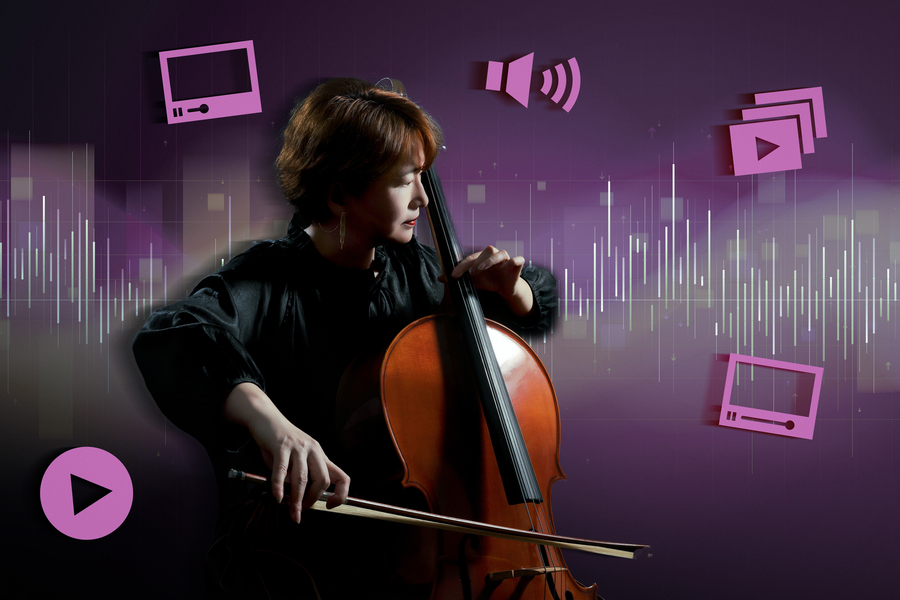Artificial intelligence systems are getting better at mimicking how humans naturally connect what they see with what they hear.
MIT researchers have developed a new machine-learning approach that helps AI models automatically match corresponding audio and visual information from video clips—without needing human labels to guide the process. The breakthrough could eventually help robots better understand real-world environments where sound and vision work together.
The research builds on how humans instinctively learn by linking different senses. When you watch someone play the cello, you naturally connect the musician’s bow movements with the music you’re hearing. The MIT team wanted to recreate this seamless integration in artificial systems.
Fine-Tuning Audio-Visual Connections
The researchers improved upon their earlier work by creating a method called CAV-MAE Sync, which learns more precise connections between specific video frames and the audio occurring at exactly those moments. Previously, their model would match an entire 10-second audio clip with just one random video frame—like trying to sync a whole song with a single photograph.
“We are building AI systems that can process the world like humans do, in terms of having both audio and visual information coming in at once and being able to seamlessly process both modalities,” explains Andrew Rouditchenko, an MIT graduate student and co-author of the research.
The new approach splits audio into smaller windows before processing, creating separate representations that correspond to each smaller time segment. During training, the model learns to associate individual video frames with the audio happening during just those frames—a much more granular and realistic approach.
Solving Competing Objectives
The team tackled a fundamental challenge in AI training: balancing two different learning goals that can conflict with each other. The model needs to both reconstruct missing audio and visual information (like filling in blanks) and learn to associate similar sounds with similar images.
These objectives were competing because they required the same internal representations to do double duty. The researchers solved this by introducing specialized “tokens”—dedicated components that handle different aspects of learning without interfering with each other.
Key improvements in the new system include:
- Fine-grained temporal alignment between audio segments and video frames
- Separate “global tokens” for learning cross-modal associations
- “Register tokens” that help focus on important details
- Better balance between reconstruction and contrastive learning objectives
The architectural tweaks might sound technical, but they address a core problem in AI: how to learn multiple skills simultaneously without one interfering with another.
Real-World Applications
The enhanced model showed significant improvements in practical tasks. When asked to retrieve videos based on audio queries, it performed more accurately than previous versions. It also got better at predicting the type of scene from combined audio-visual cues—distinguishing between the sound of a dog barking versus an instrument playing.
“Sometimes, very simple ideas or little patterns you see in the data have big value when applied on top of a model you are working on,” notes lead author Edson Araujo, a graduate student at Goethe University in Germany.
The research has immediate applications in journalism and film production, where the model could help automatically curate content by matching audio and video elements. Content creators could use it to find specific types of scenes or sounds within large video libraries.
Looking Forward
But the longer-term vision is more ambitious. The researchers want to eventually integrate this audio-visual technology into large language models—the AI systems that power modern chatbots and virtual assistants.
“Looking forward, if we can integrate this audio-visual technology into some of the tools we use on a daily basis, like large language models, it could open up a lot of new applications,” Rouditchenko says.
The team also hopes to enable their system to handle text data, which would be an important step toward creating comprehensive multimodal AI that processes language, sound, and vision together.
For robots operating in real environments, this kind of integrated perception could prove crucial. Just as humans rely on both sight and sound to navigate the world, future robotic systems may need similar capabilities to interact naturally with their surroundings.
The work represents another step toward AI systems that process information more like humans do—not as separate streams of data, but as interconnected experiences that make sense of the world through multiple channels at once.
Discover more from NeuroEdge
Subscribe to get the latest posts sent to your email.

